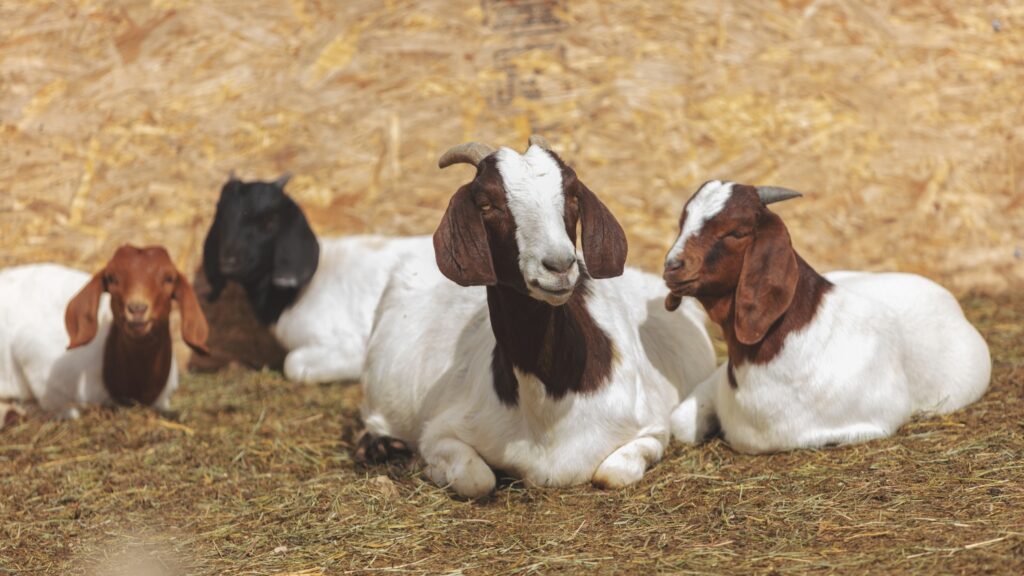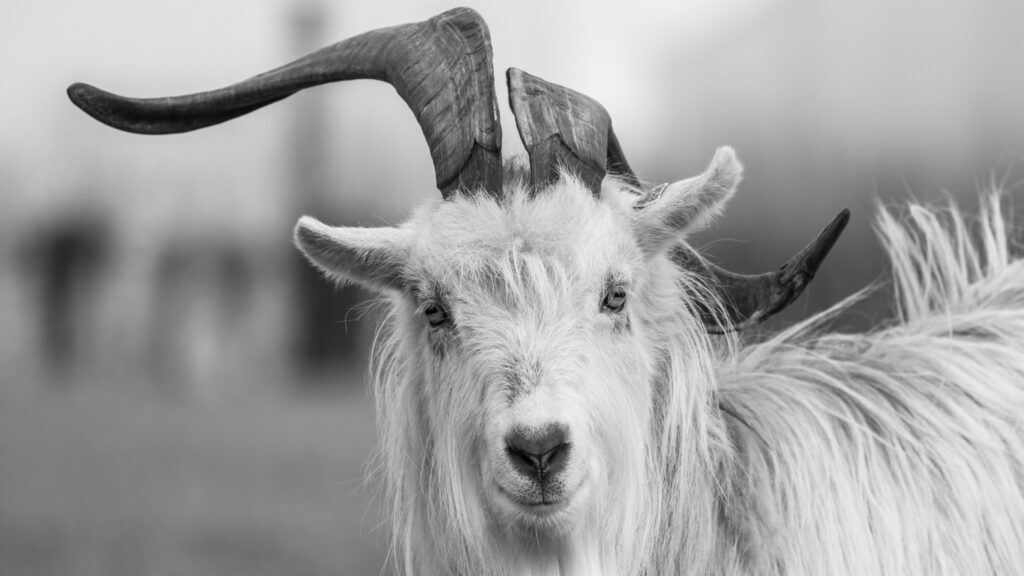Discover the differences between Kiko goats and Boer goats in our comprehensive comparison. Find out which breed is best for your farm! Kiko Goats Vs Boer Goats
Table of Contents
Introduction
Choosing the right goat breed for your farm can be hard. Did you know that Boer and Kiko goats are among the most popular meat breeds? This article will compare these two to help you make an informed decision.
Read on!
Key Takeaways
- Boer goats originate from South Africa and are known for their large size and fast growth rates, making them ideal for meat production. These goats have white bodies with red heads and excel in various climates thanks to their hardiness.
- Kiko goats were developed in New Zealand to be tough, with a focus on meat production, parasite resistance, and survival in harsh conditions. Their adaptability allows them to thrive in different environments without needing much care.
- Both breeds are primarily raised for meat due to their efficient conversion of feed into weight. However, they also contribute valuable genetics for breeding programs aimed at improving herd qualities such as health resistance and productive efficiency.
- When choosing between Kiko and Boer goats for your farm, consider factors like climate adaptability, grazing capabilities, disease resistance levels, nutritional needs, breeding management preferences, and overall farm management abilities.
- The benefits of each breed vary: Boer goats bring high-quality meat production and strong reproduction traits while Kiko goats offer resilience against parasites, diseases, and harsh conditions alongside excellent mothering skills.

Image Source: Canva
Background on Boer and Kiko Goats
Boer goats, originating from South Africa, are known for their white bodies with a redhead and have been bred for meat production. Kiko goats, on the other hand, were developed in New Zealand as a hardy breed to thrive in various environments and provide efficient meat production.
Breed origins
Kiko goats hail from New Zealand, a product of genetic research aiming to optimize meat production, parasite resistance, and hardiness. Farmers in the 1980s crossed local feral goats with dairy breeds like the Saanen, Toggenburg, and Anglo-Nubian.
Their goal was straightforward: create a breed that thrives in harsh conditions while producing high-quality meat.
South Africa is the birthplace of Boer goats, developed for meat goat breeds’ superiority in size, growth rate, and fertility. Named after Dutch settlers called “Boers” who began breeding them in the early 20th century, these goats quickly gained popularity across continents for their exceptional qualities relevant to both livestock comparison and meat goat farming efficiency.
Physical characteristics
Moving from their intriguing origins, Boer and Kiko goats display distinct physical characteristics that set them apart. Boer goats are known for their large, muscular build, making them a top choice for meat production.
They have a distinctive white body and a redhead, sometimes with spots. Their size and heavy bone structure contribute to the breed’s reputation for high-quality meat.
On the other hand, Kiko goats present a leaner frame but are incredibly hardy animals. Originating from New Zealand’s challenging climates has made them adaptable to various environments.
They often have white or creamy coats but can come in other colors too. These goats are valued for their excellent mothering skills and survival instincts, traits that make them highly efficient in converting feed into weight gain without requiring extensive care.
Common uses
Boer and Kiko goats mainly serve in meat production, fulfilling the growing demand for goat meat across various markets. Farmers often choose these breeds for their impressive growth rates and efficient feed-to-meat conversion.
They play a crucial role in livestock comparison due to their adaptability to different environments and management systems, making them ideal for both small-scale and commercial farming operations.
In addition to meat production, some farmers use Boer goats as breeding stock because of their superior genetics that improve herd quality over generations. Kiko goats, known for their hardiness and parasite resistance, offer genetic research opportunities to develop even more resilient herds.
Both breeds contribute significantly to the productivity analysis of meat goats by providing valuable data on growth patterns, health issues, and overall performance in varying climatic conditions.

Image Source: Canva
Comparison of Boer and Kiko Goats
Boer goats and Kiko goats differ in hardiness, reproductive output, and health resistance. Boer goats are known for their high productivity, while Kiko goats stand out for their remarkable parasite resistance.
Hardiness
Kiko goats are known for their exceptional hardiness, thriving in various climates and terrains. Their natural resilience makes them well-suited for rugged landscapes and harsh environmental conditions.
Boer goats also exhibit remarkable hardiness, demonstrating adaptability to diverse farming environments and withstanding challenging weather patterns. Both breeds share a robust resilience that contributes to their reputations as low-maintenance livestock options for farmers seeking adaptable breeds capable of flourishing in demanding settings.
Reproductive output
Kiko goats have high reproductive capabilities, with does typically producing large litters of kids. Their natural breeding instincts and excellent mothering abilities contribute to a high retention rate among offspring.
Boer goats also exhibit strong reproductive output, They are known for their prolificacy and good mothering skills. Both breeds have been extensively used in genetic research studies focusing on enhancing productivity traits such as fertility and litter size.
Looking at the health and parasite resistance of Kiko and Boer goats next will provide further insight into their suitability for meat production under different farming conditions.
Health and parasite resistance
Moving from discussing reproductive output to the crucial aspect of health and parasite resistance in meat goat breeds, it’s essential for farmers to understand the resilience of their livestock.
Both Boer and Kiko goats are known for their robust health and strong resistance to parasites. Their genetic makeup contributes significantly to this trait, allowing them to thrive in a range of environments without succumbing easily to common diseases or parasitic infestations prevalent within the realm of goat farming.
These breeds have been meticulously developed with an underlying emphasis on hardiness and disease resistance, underpinning their suitability for meat production. This innate ability ensures that farmers can focus more on enhancing productivity rather than dealing with complex health issues.
Benefits of Each Breed
Boer goats exhibit high growth rates and excellent carcass qualities, making them desirable for meat production. Kiko goats, on the other hand, are known for their hardiness and strong parasite resistance.
To delve deeper into the advantages of each breed, read on.
Boer goat benefits
Boer goat benefits include high meat production and fast growth rates. Their adaptive nature makes them suitable for various climates. With excellent reproductive capabilities, Boer goats yield a steady supply of offspring. Additionally, they exhibit robust health and parasite resistance, making them low-maintenance. Boer goats are known for their efficient feed conversion, resulting in cost-effective meat production. Their sturdy build allows them to thrive in diverse farm management settings, whether pasture-based or intensive systems.
Kiko goat benefits
Kiko Goat Benefits:
- Kiko goats are highly valued for their excellent meat production, making them a top choice for meat breeders and producers.
- These goats are renowned for their exceptional hardiness, enabling them to thrive in various climates and terrains, making them adaptable to different farm settings.
- Due to their natural resistance to parasites and diseases, Kiko goats require minimal veterinary intervention, reducing healthcare costs for farmers.
- They exhibit strong maternal instincts, ensuring high reproductive rates and successful kid retention among breeding stock.
- Kiko goats have a longer lifespan compared to other meat goat breeds, providing sustained productivity over several years.
- Their superior foraging abilities enable them to efficiently utilize natural grazing resources, contributing to cost-effective farm management.
These benefits position Kiko goats as an ideal choice for livestock breeders seeking productive and resilient meat goat breeds.
Choosing the Right Breed for Your Farm
Choose the right breed for your farm by considering location and climate, as well as your farm management abilities. Read more to make an informed decision.
Considerations for location/climate
Considerations for location/climate:
- Ensure the breed is suited to your specific climate and terrain, whether cold, hot, dry, or wet.
- Evaluate the adaptability of each breed to varying altitudes and precipitation levels.
- Take into account the availability of suitable forage and browse in your area for the goats’ grazing needs.
- Assess the breed’s tolerance to extreme weather conditions such as heavy rain, snowfall, or high humidity.
- Consider the breeds’ ability to withstand prevalent diseases or parasites in your particular region.
- Examine how each breed copes with seasonal changes and temperature fluctuations in your area.
- Look into any special shelter or housing requirements based on your climate’s characteristics.
Farm management abilities
Kiko goats and Boer goats have different farm management abilities that can impact your decision when choosing a breed for your farm. Here’s a breakdown of the key factors to consider:
- Grazing Capabilities:
Kiko goats are known for their superior grazing abilities, thriving in rugged landscapes and harsh climates. They are adept at foraging for their food, reducing reliance on supplemental feed.
- Adaptability to Climate:
Boer goats exhibit resilience in warmer climates, while Kiko goats are better suited to colder and wetter environments. Understanding your farm’s climate is crucial in selecting the most suitable breed.
- Disease Resistance:
Kiko goats have developed natural resistance to parasites due to their breeding history, making them a favorable choice for farms aiming to minimize chemical intervention and reduce parasite-related issues.
- Nutritional Requirements:
Consider the availability of grazing land and supplemental feed options as Kiko goats tend to rely more on grazing, while Boer goats may require additional dietary support during certain seasons.
- Breeding Management:
Both breeds have different reproductive tendencies, so understanding and managing their breeding patterns is important when planning for herd growth or genetic improvement.
- Herd Health Maintenance:
Regular health checks and management requirements vary between the two breeds; thus, it is essential to factor this into your farming operations.
These considerations will play significant roles in determining which breed aligns best with your farm’s management capabilities and goals.
Conclusion
After comparing Kiko and Boer goats, it’s clear that each breed has its own strengths. Boer goats excel in reproductive output, making them suitable for meat production, while Kiko goats stand out for their exceptional hardiness and parasite resistance.
When choosing a breed for your farm, consider the climate and your farm management abilities to ensure the best fit. Ultimately, understanding the unique characteristics of both breeds will help you make an informed decision for your goat farming endeavors.
FAQs
What are the main differences between Kiko goats and Boer goats?
Kiko goats are known for their hardiness and maternal instincts, while Boer goats are larger and have higher meat production.
How do the feeding requirements of Kiko goats compare to those of Boer goats?
Kiko goats are more adaptable to foraging and browsing, requiring less concentrated feed compared to Boer goats.
Which goat breed is better suited for a hot climate?
Kiko goats are better adapted to hot climates due to their heat tolerance and resistance to parasites, compared to Boer goats.
What is the average lifespan of Kiko and Boer goats?
Both Kiko and Boer goats have an average lifespan of around 10-12 years when well cared for in proper conditions.
Are there differences in kidding rates between Kiko and Boer Does?
Kiko does generally have a higher kidding rate than Boer does, making them more prolific breeders.